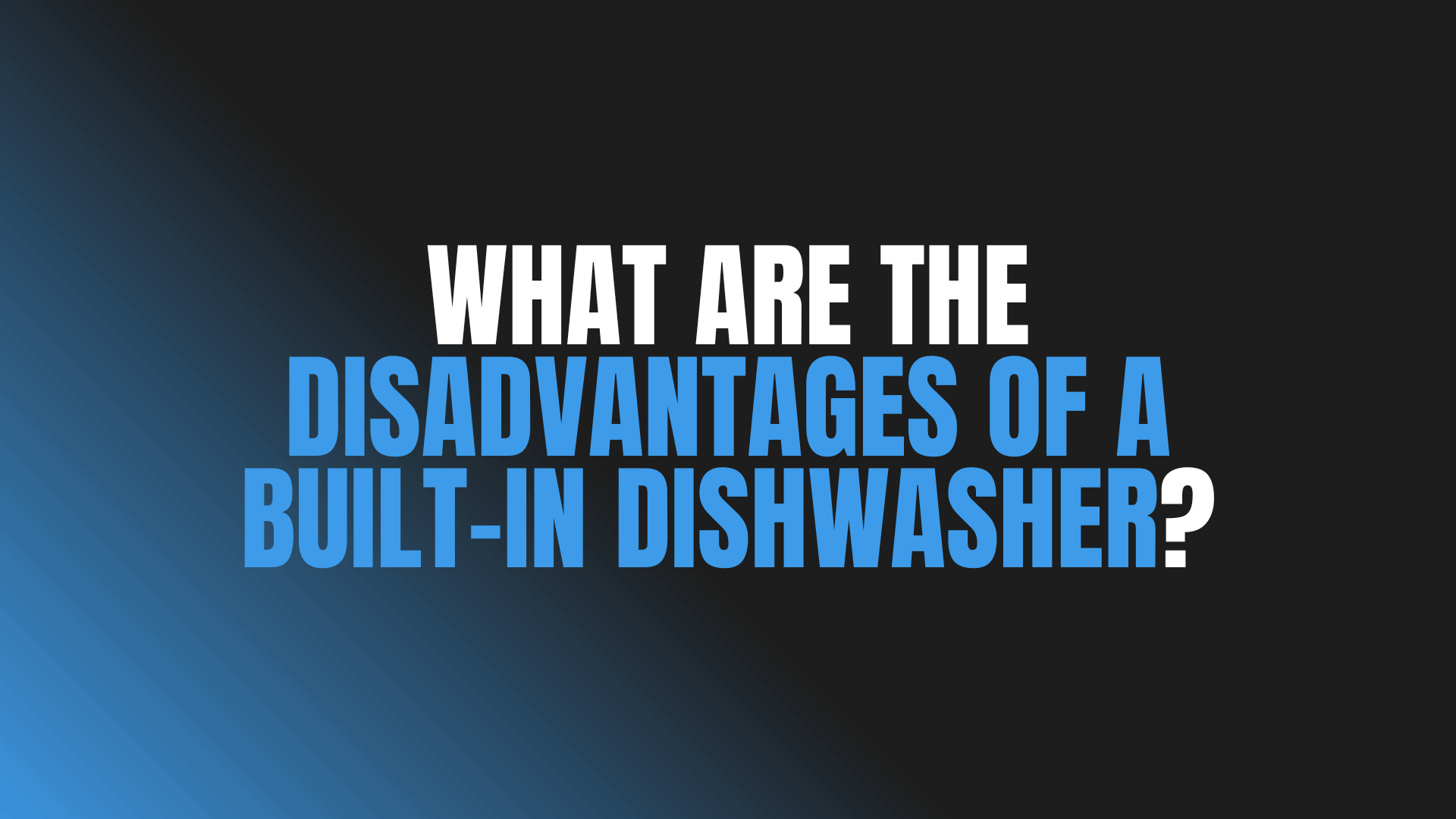
Question: What Are the Disadvantages of a Built-in Dishwasher?
Answer: Disadvantages of a built-in dishwasher include: they can be expensive, often require professional installation, reduce usable cabinet space, and might necessitate plumbing/electrical work. Repairs can also be costly.
Built-In Dishwashers: Understanding the Downsides Before You Buy
Built-in dishwashers promise a sleek look and effortless kitchen cleanup. But before you commit, it’s wise to consider their potential drawbacks. This article explores the less talked-about aspects of built-in dishwashers to help you decide if they truly fit your home and lifestyle. We’ll delve into everything from how they impact your kitchen space and budget to potential repair headaches and noise levels. By getting a complete picture, you can make an informed choice that works best for you.
Equipping your kitchen effectively means understanding both the pros and cons of any major appliance. This detailed analysis of built-in dishwasher disadvantages aims to empower you with the knowledge needed to select the right fit. Always consider your daily habits, budget, and kitchen layout—these factors are crucial in your decision-making process.
Space Limitations and Kitchen Design
Built-in dishwashers require a dedicated amount of cabinet space, which can significantly limit your kitchen’s design flexibility. They demand precise dimensions for installation, posing particular challenges in smaller kitchens where every inch counts. It’s crucial to carefully measure your available space to ensure a built-in model will fit.
Existing cabinetry might need to be modified or even replaced to accommodate a new built-in unit, adding to the overall installation cost. To avoid costly surprises, measure your space accurately and consult a professional installer for guidance. Additionally, integrating a built-in dishwasher can sometimes limit valuable counter space.
When planning, assess your kitchen’s workflow to ensure the dishwasher’s placement optimizes functionality and doesn’t create congestion. Consider its proximity to your sink and other frequently used appliances for a more efficient kitchen.
Click here for more information on Blue Kitchen Refacing
Related Article: Do Freestanding Dishwashers Need to Be Plumbed In?
Related Article: Can You Use Dish Soap in a Dishwasher?
Repair Costs and Accessibility Challenges
When a built-in dishwasher needs a fix, accessing its internal components can be tricky. This difficulty often complicates repairs and can drive up labor costs. Because they are integrated into your cabinetry, built-in models frequently require specialized tools and expertise for servicing. It’s smart to factor in potential repair expenses over the appliance’s lifespan.
Some repairs might even involve completely removing the dishwasher from its enclosure, which adds both time and expense to the process. To reduce the likelihood of frequent breakdowns, choose a reputable brand known for its reliability. Remember, regular maintenance is also key to preventing major issues.
Simple preventative measures, such as regularly cleaning filters and ensuring a proper water supply, can significantly extend your dishwasher’s lifespan and minimize the need for costly repairs. Always consult your owner’s manual for specific maintenance guidelines to optimize performance.
The Risk of Water Damage
Built-in dishwashers, like any appliance connected to your plumbing, carry a risk of water leaks. Malfunctioning hoses or seals can lead to significant water damage to surrounding cabinets and flooring. Make it a habit to regularly inspect hoses and connections for any signs of wear and tear, and address any leaks promptly to prevent extensive damage.
For added protection, consider installing a drip pan or water sensor underneath the dishwasher. These provide an early warning system for leaks. You might also look for dishwashers with built-in leak detection features, which add an extra layer of defense against water damage. Proper installation is crucial for minimizing leak risks.
Ensure the dishwasher is level and securely seated in its enclosure. Always follow the manufacturer’s instructions for installation and maintenance. These steps help prevent leaks and protect your kitchen from water damage, while regular inspections help you catch potential issues early.
Considering Energy and Water Consumption
Like all major appliances, built-in dishwashers consume both energy and water. When shopping, compare energy efficiency ratings carefully and select a model designed to minimize resource usage. Many modern dishwashers now offer eco-friendly wash cycles specifically designed to use less water and energy.
To maximize efficiency, always run full loads to conserve resources. If your dishwasher has a feature that eliminates the need for pre-rinsing, take advantage of it. Simply scrape off excess food before loading to maintain performance.
Using the appropriate wash cycle for the load size and soil level will further optimize both energy and water consumption. Look for models with smart water-saving features to contribute to both your utility bill savings and environmental conservation.
Understanding Noise Levels During Operation
Built-in dishwashers produce noise during their operation, though sound levels can vary significantly between models. If noise is a concern for your home, especially if your kitchen is open to living areas, be sure to check the decibel ratings (dB) before making a purchase. Quieter models are available and typically feature better sound insulation and vibration reduction.
Consider the dishwasher’s location in relation to noise-sensitive areas of your home. Placing it away from bedrooms or quiet study spaces can help minimize disturbance. Running the dishwasher during off-peak hours (like overnight) can also reduce its impact on daily activities. When making your decision, always weigh the noise level alongside other important features.
Conclusion – What Are the Disadvantages of a Built-in Dishwasher?
While built-in dishwashers offer undeniable convenience, they do come with several considerations. Factors like their specific space requirements, potential installation costs, and the complexity of repairs need careful thought. The risk of water damage and varying noise levels during operation also warrant attention. To make the best choice, carefully evaluate your needs and kitchen layout to determine if a built-in dishwasher truly aligns with your priorities.
Weighing the benefits against these potential drawbacks is crucial for an informed decision. Also, consider alternative options such as portable or countertop dishwashers, which offer greater flexibility for smaller kitchens or renters. Ultimately, choosing the dishwasher that best suits your lifestyle and budget will ensure a satisfying and functional addition to your home.

Blue Malue Get in touch with Blue here.
